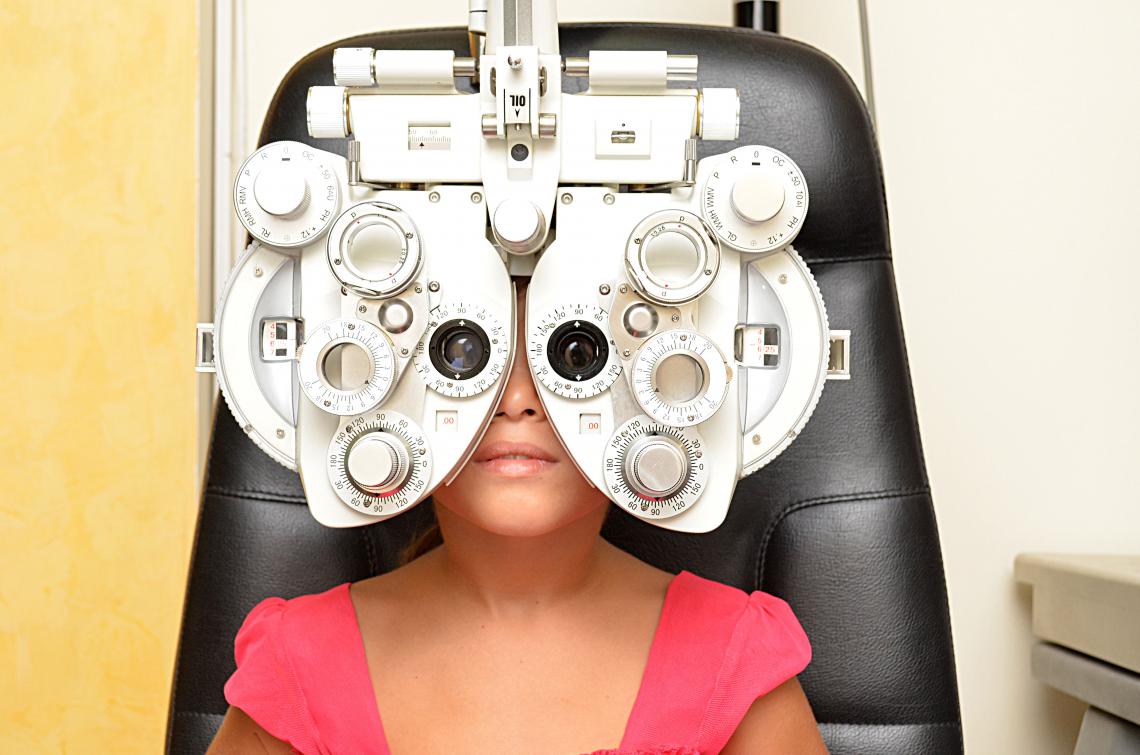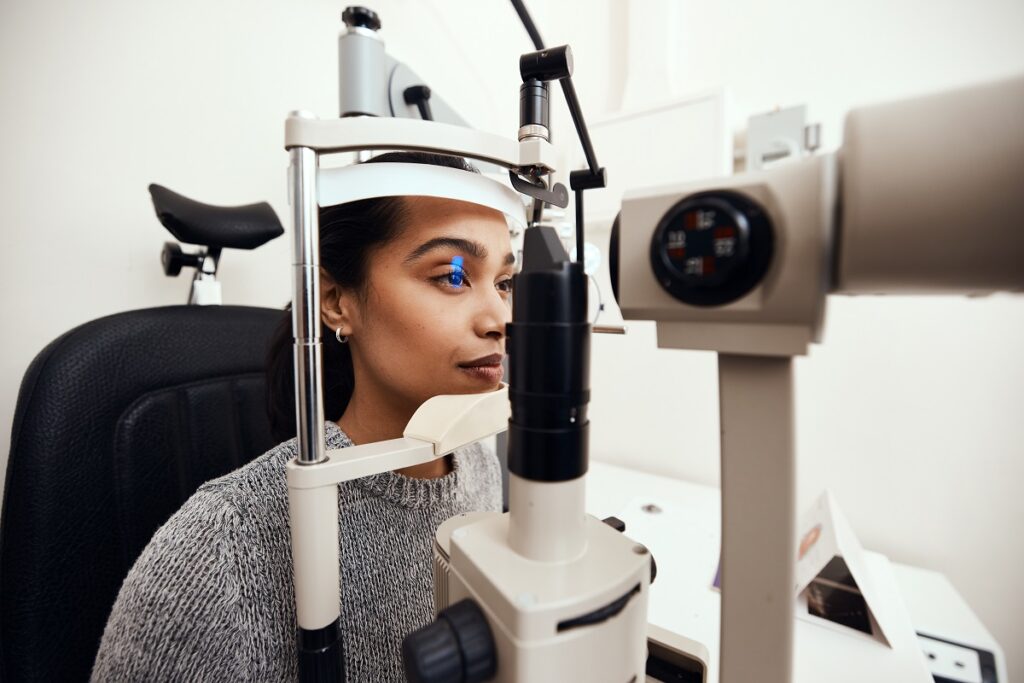Experience Personalized Treatment with Opticore Optometry in Chino
Wiki Article
Discovering the most recent Technological Developments in Optometry and What They Mean for Optometrists
In the ever-evolving area of optometry, current technological innovations are improving how professionals approach eye treatment. From the precision of Optical Coherence Tomography to the nuanced understandings provided by AI-driven diagnostic devices, these technologies are setting new standards in individual assessment and therapy. Teleoptometry is positioned to redefine access, making sure that expertise transcends geographical constraints. As these advancements penetrate the practice, optometrists are confronted with the difficulty of welcoming these devices to enhance patient outcomes. Yet, the concern stays: just how will these technological shifts redefine the duties and duties within the occupation?Advancements in Diagnostic Tools
Advancing the area of optometry, innovations in diagnostic devices have actually revolutionized the means eye treatment experts evaluate and detect visual problems and eye conditions. The past decade has experienced considerable technological advancements, enabling even more detailed and accurate assessments. Optical Coherence Tomography (OCT), for instance, gives high-resolution cross-sectional images of the retina, enabling the early discovery of illness such as glaucoma and age-related macular degeneration. This non-invasive imaging technique has ended up being vital in modern optometric practice.An additional secret advancement is the introduction of sophisticated corneal topography systems, which map the surface area curvature of the cornea with accuracy. These devices are specifically helpful for fitting contact lenses and diagnosing corneal disorders. Electronic retinal imaging has transformed standard ophthalmoscopy, supplying comprehensive, breathtaking views of the retina that help with complete aesthetic examinations.
The advancement of wavefront aberrometry has actually additionally been vital, enabling the evaluation of refractive mistakes with unrivaled accuracy (Eye Doctor). This innovation helps in personalizing restorative lenses and enhancing surgical end results for refractive surgeries. Jointly, these diagnostic developments equip optometrists to deliver premium individual treatment, ensuring very early treatment and tailored treatment methods, ultimately improving aesthetic wellness outcomes
AI in Person Monitoring
Building on the foundation of innovative analysis tools, the consolidation of man-made knowledge (AI) in client monitoring represents a transformative leap for optometry. AI systems are significantly employed to improve performance, accuracy, and personalization in patient care. By examining vast quantities of data, AI can identify patterns and predict prospective eye conditions, allowing optometrists to tailor treatments better. This capability is vital in managing chronic eye diseases such as glaucoma and diabetic retinopathy, where early discovery and continuous tracking are key.Additionally, AI-driven systems facilitate structured individual interactions and administrative procedures. Automated scheduling, online consultations, and individualized follow-up strategies not just enhance person fulfillment but additionally maximize time administration for practitioners. These systems can triage patients based upon the urgency of their problems, guaranteeing that those in essential demand obtain punctual interest.
In addition, AI boosts decision-making by offering eye doctors with evidence-based suggestions and treatment paths. By integrating information from digital health and wellness records, AI devices use understandings that educate clinical decisions, reducing the threat of errors and improving person end results. As AI remains to progress, its duty in person administration will likely expand, improving the landscape of optometric care.
Developments in Retinal Imaging
In the world of optometry, retinal imaging has observed remarkable technological innovations that are enhancing analysis capabilities and patient care. Developments such as Optical Comprehensibility Tomography (OCT) and fundus photography have transformed exactly how eye doctors assess the retina and imagine. OCT, particularly, provides high-resolution, cross-sectional pictures of the retina, enabling the comprehensive assessment of its layers. This capability is very useful for very early discovery and management site of conditions like glaucoma, diabetic person retinopathy, and age-related macular deterioration.Improved imaging modalities like OCT angiography are additional refining diagnostic precision. This non-invasive method maps blood flow in the retina, offering vital insights into vascular wellness without the demand for color shots. In addition, adaptive optics innovation is being incorporated right into retinal imaging systems to remedy eye aberrations, delivering unprecedented image clearness. Such developments promote the recognition of minute retinal adjustments that might signify illness development.
Moreover, developments in artificial intelligence are augmenting retinal imaging by making it possible for computerized analysis of huge datasets. These systems assist optometrists in determining patterns indicative of pathology, consequently boosting analysis accuracy and performance. Collectively, these innovations are changing retinal imaging into a foundation of contemporary eye treatment, enhancing end results and expanding healing possibilities.
Teleoptometry's Growing Duty
Teleoptometry is significantly ending up being an essential element of eye care, driven by developments in data and analysis tools. As optometry accepts digital improvement, teleoptometry assists in remote examinations, enabling optometrists to prolong their solutions past traditional limits. This is especially useful in rural and underserved locations where access to specialized eye care is frequently minimal. By leveraging high-resolution video clip conferencing and progressed retinal imaging, eye doctors can perform detailed eye tests from afar, ensuring timely medical diagnosis and treatment.her comment is here The integration of artificial intelligence (AI) further improves teleoptometry, allowing the analysis of visual information and helping in the detection of ocular conditions such as glaucoma and diabetic person retinopathy. AI-powered algorithms can quickly translate complicated imaging information, giving optometrists with important understandings that bolster scientific decision-making.
Furthermore, teleoptometry supports continuity of care with seamless assimilation with digital wellness records (EHRs), allowing eye doctors to keep detailed client backgrounds. When seeking advice from with different specialists., this makes certain that patients get individualized and constant care even.
Despite these advantages, challenges continue to be, including ensuring data security and taking care of patient expectations. Teleoptometry represents a significant stride in the direction of more easily accessible, effective, and patient-centered eye treatment. As modern technology progresses, its function is poised to expand better.

Future Trends in Eye Treatment
A myriad of cutting-edge patterns is established to reshape the future of eye treatment, driven by technological developments and the progressing needs of people. One considerable fad is the combination of expert system (AI) in diagnostics, which guarantees to boost the accuracy and performance of eye exams. AI algorithms can analyze huge amounts of data from retinal pictures, possibly detecting problems like diabetic retinopathy and glaucoma earlier than standard methods.Additionally, tailored medicine is getting traction in optometry, with hereditary screening notifying tailored therapy plans. This approach aims to enhance individual end results by customizing treatments to private genetic profiles. Wearable modern technology, such as wise get in touch with lenses, is also on the perspective, using real-time surveillance of intraocular stress or sugar degrees, thus giving continuous understandings right into eye and systemic health.
The fostering of increased reality (AR) and virtual reality (VR) in training and client education is another arising pattern. These technologies provide immersive experiences that can improve understanding and skills both for eye doctors and people. As these trends develop, eye doctors need to stay abreast of over at this website technical developments to offer cutting-edge treatment, making certain improved client end results and contentment in the dynamic landscape of eye care.
Verdict

Jointly, these analysis developments empower eye doctors to deliver premium client care, making sure early intervention and tailored treatment strategies, ultimately boosting aesthetic wellness outcomes.

As these technologies continue to develop, optometrists have to adjust and integrate them right into method, inevitably enhancing workflow efficiency and raising the standard of eye care supplied to patients.
Report this wiki page